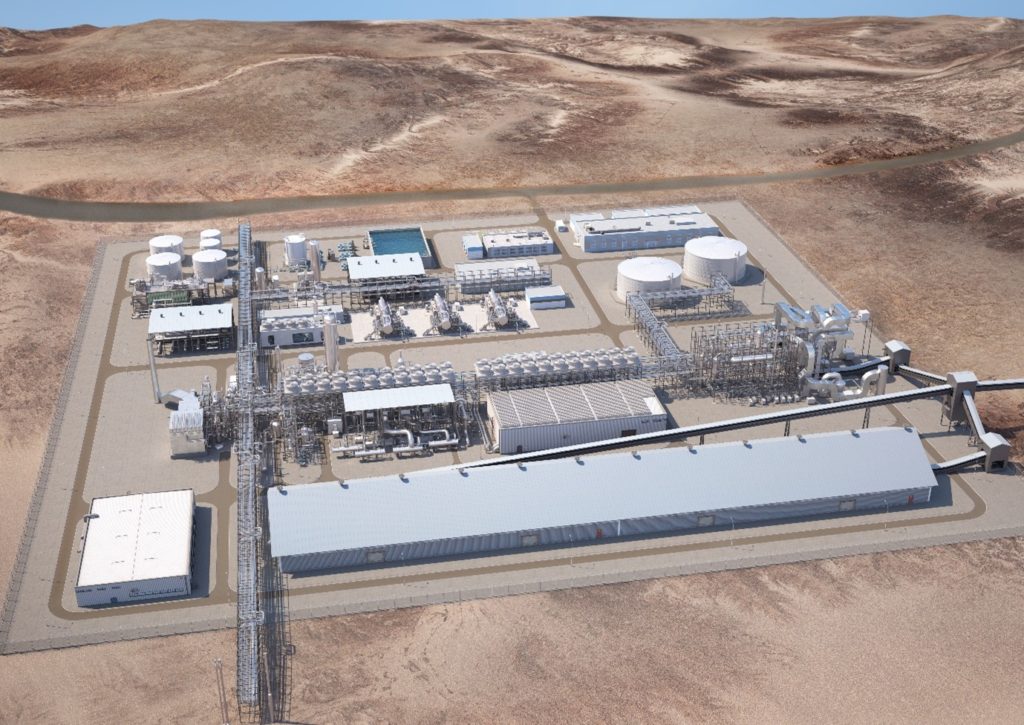NeuRizer Urea Project
NeuRizer (NRZ) is the company responsible for progressing the NeuRizer Urea Project (NRUP). NRUP is a nationally significant project that, when developed, will deliver low-cost, high-quality nitrogen-based fertiliser ensuring a secure supply for local and export agriculture markets. Located in South Australia, 550 kilometres north of Adelaide, it is intended that the NRUP will initially produce 1Mtpa of urea fertiliser with potential to increase to 2Mtpa.
The NRUP will significantly increase Australia’s sovereign manufacturing capability for fertiliser, supporting Australian agricultural food production. The NRUP will strengthen supply chain resilience that will benefit Australian farmers and, to a lesser extent, the industrial sector where urea is used as a supply input (eg. diesel additive (AdBlue), industrial resins, etc.) by reducing the nation’s reliance on imports.
The NRUP will be one of the biggest infrastructure projects of its type in Australia, providing long term economic development and employment opportunities (2,000+ construction jobs plus 2,450+ ongoing positions) for the communities of the Upper Spencer Gulf region, northern Flinders Ranges and South Australia.
The NRUP is being planned as an integrated urea production facility, meaning NRZ will be able to control both supply and price of some major cost inputs (gas and CO₂) for production, regardless of prevailing market conditions and supply chain dynamics.
About the NeuRizer Urea Project

Modelling for the NeuRizer Urea Project.
Benefits of the project
The NRUP will be a major project for South Australia that has the potential to deliver significant and long-term benefits.
It is important for NeuRizer to provide a positive legacy once the project is complete for future generations to benefit from. This will be embedded into all aspects of the business model and is a key measure to the success of the company.
Our vision for this includes: –
Positive Economic and Social Benefits through:
- Contributing to the state government GSP;
- Direct benefits to the Copley and Leigh Creek townships resulting from supply of fuel, food, accommodation and other services;
- Spending money in the state of South Australia through our employees, contractors and service providers;
- Preference to using South Australian companies where possible to deliver the project;
- Development of new business opportunities;
- Short and long-term employment opportunities for the local community;
- Upskilling of local community and indigenous groups with long term employment;
- Highly skilled and educated workforce;
- Provide research and development in the areas of sustainable and responsible practices through academic studies;
- Industry and innovation development.
We will operate responsibly wherever we work and commit to engaging with our stakeholders to manage the social, economic and environmental impacts of our activities.
Fertiliser – Why do we need it?
Every time a crop or animal product is exported from a farm, nutrients, notably nitrogen, phosphorus, potassium and sulphur have been removed from the farm and its soils.
To sustain current and future productivity, the nutrients need to be replaced by applying fertilisers. The most common fertilisers are nitrogen based with granular urea being the most common nitrogen-based fertiliser used in our agricultural systems.
In the last 50 years global crop production has expanded threefold. Without fertilisers to increase farm productivity to feed the world, vast areas of additional land would have needed to be converted from natural ecosystems, like rainforests, into agricultural production.
As populations continue to grow, and with higher yields of food per hectare of land required, more nutrients must be replaced to maintain sustainable land use.

